Previously unpublished letters by Albert Einstein to a Japanese pen pal show the physicist to be defensive over the atomic bombings of Hiroshima and Nagasaki which became possible partly through his genius.
The widow of Seiei Shinohara, a philosopher and German-Japanese translator who corresponded with Einstein in the last years of the scientist's life, has chosen to go public with the letters on the 60th anniversary of the world's only nuclear attacks.
Einstein's opposition to nuclear warfare has already been documented, but his letters to Shinohara also show him defending himself on a personal level and trying to reconcile his pacifism.
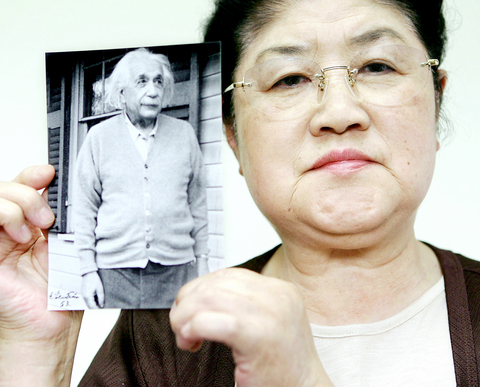
PHOTO: AFP
The correspondence began in 1953 when Shinohara sent a letter to Einstein criticizing the physicist over his role in developing nuclear weapons.
Einstein responded by hand on the back of the typed letter, beginning his rebuttal without bothering to offer greetings.
"I have always condemned the use of the atomic bomb against Japan but I could not do anything at all to prevent that fateful decision," Einstein wrote in German to Shinohara in a letter dated June 23, 1953.
This year marks the centennial of Einstein's theory of relativity. He argued that distance and time are not absolute, leading to his most famous formula, E=mc2, which was essential for the development of the atomic bombs dropped on Japan by the US.
The Hiroshima bombing killed around 140,000 people -- almost half the city population of the time -- immediately or in the months afterward from radiation injuries or horrific burns.
More than 70,000 more people died three days later in the bombing of Nagasaki. After six days Emperor Hirohito went on the radio for the first time to announce the surrender of Japan, which since the war has campaigned to abolish nuclear weapons.
"The only consolation, it seems to me, in the development of nuclear bombs is that this time the deterrent effect will prevail and the development of international security will accelerate," Einstein wrote in another letter.
`Convinced pacifist'
But Einstein, whose Jewish origins led him to flee Germany in 1933 for the US after Adolf Hitler came to power, also said that war was sometimes acceptable.
"I didn't write that I was an absolute pacifist but that I have always been a convinced pacifist. That means there are circumstances in which in my opinion it is necessary to use force," he wrote.
"Such a case would be when I face an opponent whose unconditional aim is to destroy me and my people," he said. "Therefore the use of force against Nazi Germany was in my opinion justified and necessary."
Shinohara, who studied philosophy in Germany before returning to Tokyo in 1947, died of a stroke in 2001 at age 89. His letters have since been kept in private by his widow, Nobuko Shinohara.
The correspondence ended in July 1954, a year before Einstein died, dashing Shinohara's dream to meet the physicist face to face.
"My husband first sent the letter with anger and I guess Dr Einstein replied with annoyance," said Shinohara, 80.
"But later Dr Einstein and my husband formed a friendship through exchanging letters," she said.
She noted that this year was designated as "Einstein Year" to mark the 100th anniversary of three of the physicist's four papers that changed the way we view the universe.
"I decided to look for a suitable museum to display the letters in public because I reached a conclusion that it's good for a lot of people to have a chance of seeing them directly," Shinohara said.
"I hope to donate the letters soon because this year is a remarkable year -- the 60th anniversary of the atomic bombs and the end of World War II," she said.
"I think his letters are a great message from Dr Einstein to everybody in modern times as we are still struggling to reduce nuclear weapons."
The couple sent a Japanese doll and traditional pictures to Einstein while receiving in return his black-and-white photograph with his autograph.
"My husband repeatedly told me he really missed Dr Einstein after his death," Shinohara said. "He told me there were a lot of other things to discuss with Dr Einstein."
Several museums have already made requests seeking the letters for their collections, according to Yutaka Sakuma, a lawyer handling the papers.
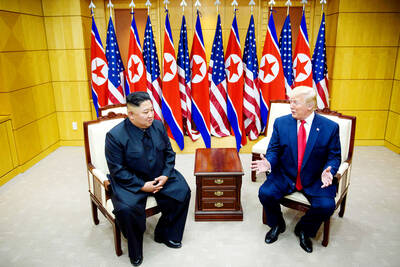
US President Donald Trump may have hoped for an impromptu talk with his old friend Kim Jong-un during a recent trip to Asia, but analysts say the increasingly emboldened North Korean despot had few good reasons to join the photo-op. Trump sent repeated overtures to Kim during his barnstorming tour of Asia, saying he was “100 percent” open to a meeting and even bucking decades of US policy by conceding that North Korea was “sort of a nuclear power.” But Pyongyang kept mum on the invitation, instead firing off missiles and sending its foreign minister to Russia and Belarus, with whom it
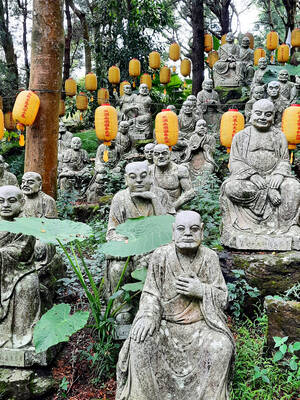
When Taiwan was battered by storms this summer, the only crumb of comfort I could take was knowing that some advice I’d drafted several weeks earlier had been correct. Regarding the Southern Cross-Island Highway (南橫公路), a spectacular high-elevation route connecting Taiwan’s southwest with the country’s southeast, I’d written: “The precarious existence of this road cannot be overstated; those hoping to drive or ride all the way across should have a backup plan.” As this article was going to press, the middle section of the highway, between Meishankou (梅山口) in Kaohsiung and Siangyang (向陽) in Taitung County, was still closed to outsiders
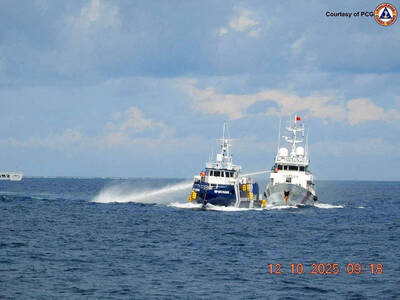
Many people noticed the flood of pro-China propaganda across a number of venues in recent weeks that looks like a coordinated assault on US Taiwan policy. It does look like an effort intended to influence the US before the meeting between US President Donald Trump and Chinese dictator Xi Jinping (習近平) over the weekend. Jennifer Kavanagh’s piece in the New York Times in September appears to be the opening strike of the current campaign. She followed up last week in the Lowy Interpreter, blaming the US for causing the PRC to escalate in the Philippines and Taiwan, saying that as
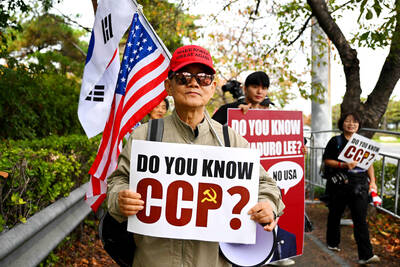
The Chinese Communist Party (CCP) has a dystopian, radical and dangerous conception of itself. Few are aware of this very fundamental difference between how they view power and how the rest of the world does. Even those of us who have lived in China sometimes fall back into the trap of viewing it through the lens of the power relationships common throughout the rest of the world, instead of understanding the CCP as it conceives of itself. Broadly speaking, the concepts of the people, race, culture, civilization, nation, government and religion are separate, though often overlapping and intertwined. A government